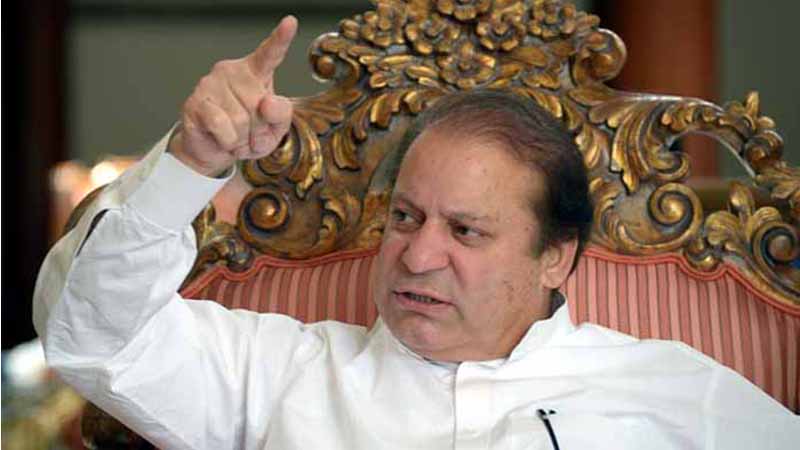Pakistan Muslim League-N (PML-N) chief Nawaz Sharif’s recent statement on the clear succession plan has killed many birds with the same stone. Amid uncertainty surrounding the future of democracy and, in particular, the fate of Nawaz Sharif, many pundits were of the view that an intra-Sharif conflict would facilitate the break-up of the ruling party.
Nawaz’s statement should therefore be viewed in this particular context, whereby he has confirmed that the PML-N leadership will remain within the Sharif family.
According to unconfirmed media reports, efforts have been underway since July to create a forward bloc within the PML-N. Some indications to that effect also came in public light when former members of the cabinet such as Riaz Pirzada and Chaudhry Nisar openly questioned Nawaz’s hold over the party. The threats facing the Sharif dynasty are real. Nawaz’s July 28 ouster was not carried out to allow him to return to the Islamabad throne anytime soon. Whatever he may say about his fight for civilian supremacy and correcting the role of a powerful establishment, Nawaz understands quite well the intricacies of power politics in Pakistan. After all, he is the most experienced politician at the national level and has been a part of numerous conspiracies to dislodge civilian governments in the past. Sensing the likelihood of factionalism within the PMLN, Nawaz seems to have settled for a pragmatic route which would ensure the continuation of PML-N as the country’s largest political player.
This is a wise move because fragmentation of political parties is always an anathema to democratic process and allows for opportunism to become into a norm.
Furthermore, it is only with the survival of PML-N that Nawaz and his daughter Maryam Nawaz can have a viable political future. Having said that, the prospect of dynastic politics and political offices treated as family property is not a welcome sign. As the head of a large political force, Nawaz had the option to restructure his party and allow for alternative leadership to emerge. Sadly that remains unlikely in the near term. Sharifs’ key rival Pakistan Tehreek-e-Insaf chief Imran Khan presents the non-dynastic option for Pakistani middle class and young voters who wish to see a substantive change in the way the business of politics is conducted in the country. So while the Sharifs may be secure for now, their dynastic control over a political party is likely to harm them in the long-term.
In the ongoing tug of war between powerful unelected institutions and Nawaz Sharif, the latest statement on the succession plan will surely upset those who were wishing for a speedy fragmentation of PML-N for that could have expanded the space for pliable political actors.
The traditional engineers of Pakistani politics made a grave miscalculation when they thought that they could reenact the 1990s. Recent events have proved that the country has surely moved on and the political elites are not only well aware of the engineering process but are also willing to challenge it. That is a glimmer of hope and seems to suggest that despite our cynicism about the future of democracy in Pakistan, the state of political affairs is not entirely hopeless.
Published in Daily Times, December 22, 2017: Nawaz’s sixer? (Daily Times)



